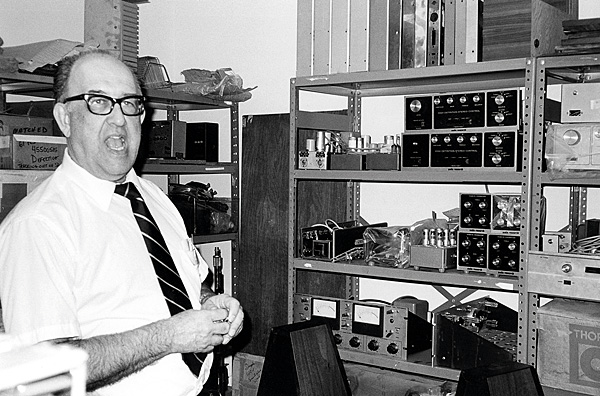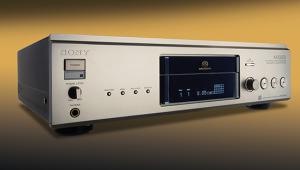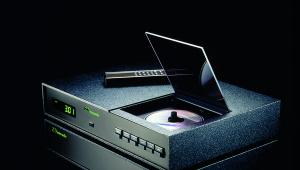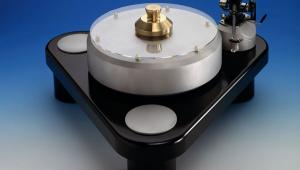The Powerhouse

 Ken Kessler explains why he believes Audio Research's Reference 1 preamp and Reference 600 power amplifiers are in a class of their own
Ken Kessler explains why he believes Audio Research's Reference 1 preamp and Reference 600 power amplifiers are in a class of their own
Whatever your response to once-in-a-generation revelations, the Audio Research Reference 600 monoblock amplifiers and the matching Reference 1 preamp will render all who hear them something akin to 'gob-smacked'.
What's so different about the first Audio Research products the company feels are worthy of the name 'Reference'? It isn't the size of the tube complement, because earlier Audio Research models like the D-250 were fitted with valves by the dozen. It isn't price, because there are tube products from other companies that make the prices of these beauties seem affordable.
Size Matters
So is it the styling? No, for the clues were there in the VT-series' special editions, and the Reference 1 is an obvious descendant of the LS-range of preamps. Size? Now we're getting somewhere... My wife noticed it with a terse, 'Do amplifiers have to be that large?', followed by a 'No sane people would want those in their homes...' as she left the room shaking her head. What she saw were two chassis each measuring 483x267x749mm (whd). Only they look bigger. Then there's the weight – a backbreaking 77.2kg each. For those who buy by the pound, compare the £32,000 for a pair of Reference 600 monoblocks with certain single-ended triode amplifiers selling for £125,000.

That vast front panel is a knob- twiddling paranoid's birthday party and Christmas all rolled into one. The huge meters tell you the line voltage operating range and the power output – the latter also works with the bias controls. Directly below them is a row of 16 set screws for adjusting the bias on the 16 output tubes. Underneath these, from left to right, are the on/off rotary with a stand-by position, a fan speed adjuster, a knob for meter on/off and illumination intensity, and three knobs which select between the 16 valves for biasing and switching the meter from power output reading to bias level.
Aside from periodic valve adjustments, the only controls which you really need to address on a daily basis are the three rotaries at the lower left hand corner. On/off involves moving the control to the standby position, which lights the amber standby light between the meters. Leave it for at least five minutes if you're switching on from cold; only you and your bank manager can decide if you want to leave the 600 in standby between listening sessions, as it draws 800W idling and 300W in standby mode.
Simple Life
Finally, you move the switch to 'on'. The green light marked 'operate' will stop blinking and you're ready to go – this delay controls the warm-up of key components. Note that the standby position controls a circuit which also provides automatic shutdown in the event of a failure in the tube bias circuit.
Meanwhile, bias adjustment is as simple as it gets. Switch the rotary to select which bank of valves you're going to work on first (V1-V8 or V9-V16), select a tube, adjust the set screw to position the meter in the green area so designated and, er, that's it. Do this 32 times and you will have biased both amplifiers.

But don't rush your connections, for the back has a surprise or two as well. For one thing, this amplifier is balanced front to back, so it's XLR- only signal entry. Secondly, there are more stout binding posts at the rear than you might need. Look closely and you'll see that you're offered not just a choice of impedances, but of unbalanced or balanced speaker connection. If you're connecting the 600 to speakers or switchboxes that have a common ground system, you have to connect the negative speaker lead to the unbalanced terminal to avoid shorting the amplifier, and the positive to the 1, 2 or 4ohm unbalanced position. While I used the 600 with a half-dozen loudspeaker types and models, all were able to operate from the balanced outputs.
Clean Slate
You absolutely must look inside the 600s if you're to understand where the £32,000 went [see boxout, p129]. As company founder Bill Johnson said – with the kind of joy in his voice you'd expect of someone who was just told he could thrash a Ferrari around the old Nürburgring and hang the caution – 'This is the first time the Marketing Department told me I could design the product first, and then think about pricing'.
The 600 really is a 'clean slate' operation, the company's intention being to produce a model which lived up to a 'reference' tag, and which could drive any speakers on the market. To create a 500W masterpiece, Johnson opted for 16 tubes producing a little over 30W each, for absolute reliability.
Much is made of the stability factor, the 600 using tube regulation throughout for the output screen grids, the front-end circuitry's B+ voltages and the driver and output stage's B- voltages. The 16 output tubes combine with 50% partial cathode coupling to allow Audio Research to design and use a highly efficient, tightly coupled output transformer. The 50% coupling and the low impedances involved preclude the need for constant tube re-biasing and, what's more, the company even suggests that users needn't worry themselves about 'pin-point' bias matching.

Specified as delivering 500W into 16ohm from 20-20kHz, the 600 is also described as being capable of producing 550W under average circumstances and 600W under ideal conditions. As this is still less than 38W per tube, you can relax. The 600's power bandwidth's –3dB points are 12Hz to 80kHz, frequency response is 2Hz to 200kHz, and overall negative feedback is just 12dB. Although the matching preamp offers both balanced and unbalanced inputs and outputs, the Reference 600 only accepts balanced signals, via XLRs. Input sensitivity is 2V RMS for the rated output, while the impedance is 200kohm. It's entirely direct-coupled to the outputs, all the stages are constant current, and this is about as far as you're gonna get from the current craze for 8W out of a lone 300B without going solid-state.
Equally devoid of compromise is the breathtaking Reference 1 line-level-only preamp. What separates it from previous Audio Research designs is the microprocessor control of volume, source selection and balance, all of this taking place outside of the signal path. The microprocessor includes memory so the source selector remembers whether you're using balanced or single-ended inputs – important as every single one of the eight inputs (three auxiliary, tape, tuner, CD, video and one marked phono in anticipation of an external phono stage) – has duplicated RCAs and XLRs, though you can't have both connected at the same time. So, no, this isn't actually a 16-input preamp, but an eight-input with choices.
Self-Centred
The Reference 1 has knobs, only they don't rotate. They're spring-loaded, self-centring intermittent types, like the ones on the Acurus ACT1 processor/preamp. They have small arcs of activity, and you jerk 'em left or right to raise or lower the volume, alter the balance or select sources. Hold them and they pan through the entire arc which surrounds them in the form of green LEDs.


















































